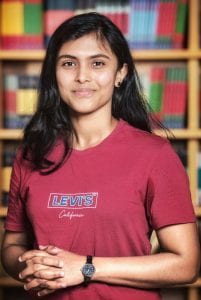Strongly-Interacting Ultralight Millicharged Particle (STUMP) Neutron Stars as Dark Matter Halos
BTPC/CFPU affiliated faculty member Stephon Alexander along with former BTPC affiliated postdoc Evan McDonough and David Spergel put forth a model of ultra-light fermionic dark matter, “STUMP dark matter.” This model shows consistency with observations of dwarf galaxies and can be distinguished from ultra-light boson dark matter through direct detection and collider signals.
Spectroscopic Tomography: A First Weak-lensing Detection Using Spectroscopic Redshifts Only
The distortion of the shape of galaxies depends on the relative distances of the lens and the galaxy whose light is distorted. If the distances are uncertain, the reconstruction of the lensing mass is complicated. In this pilot study, CFPU faculty Ian Dell’Antonio (working with colleagues at the Smithsonian Astrophysical Observatory, NASA JPL and Stony Brook) showed that the combination of a deep redshift survey and accurate lensing measurements can provide a measure of the cluster mass even using a smaller number of galaxies. In addition, they showed that increasing the number of galaxies with known distances makes it possible to measure the expansion history of the Universe directly from the amplitude of the lensing signal as a function of redshift.
Constraints on Axions from Cosmic Distance Measurements
Postdoc Manuel Buen-Abad, Chen Sun (Tel Aviv) and Prof. Fan use different combinations of the most updated distance measurements to constrain the axion-photon coupling. The derived strong bounds are comparable to or stronger than the existing bounds in the literature. The bounds are determined by the shape of Hubble rate as a function of redshift reconstructable from various distance measurements, and insensitive to today’s Hubble rate, of which there is a tension between early and late cosmological measurements.
Accurate background modeling provides the key to unambiguously detecting dark matter
The LUX-ZEPLIN (LZ) collaboration has developed a customized Monte Carlo simulation framework to model how the LZ detector responds to various types of signals. This framework will allow scientists to unambiguously either constrain or discover dark matter in the upcoming LZ search by allowing comparison between generated mock data from simulation and actual detector data.
A novel machine learning technique to mitigate backgrounds in xenon-based dark matter detectors
The LUX collaboration has developed a boosted decision tree machine learning algorithm to classify events in the LUX detector based on their signal shapes. This novel technique effectively mitigates backgrounds originating from the electrodes, and has improved the sensitivity of low-mass dark matter searches for experiments using liquid xenon as the target.
Radioactivity assays play important role controlling and modelling dominant dark matter detector background
The LUX-ZEPLIN (LZ) collaboration performed an extensive radioassay campaign over a period of six years to ensure a highly radiopure detector. The assay results not only help establish a Radon background model (one of the dominant backgrounds in the LZ detector), but will also help future scientists select and model clean materials for the next generation of dark matter detection experiments.
The impact of tandem redundant/sky-based calibration in MWA Phase II data analysis
Brown master’s student Zheng Zhang and CFPU affiliated faculty member Prof. Pober led a study of new calibration techniques for precisely characterizing the response of the Murchison Widefield Array (MWA) radio telescope. A calibration technique based on redundancy in the layout of the array’s antennas has attracted a lot of attention in the past few years, with studies conflicted about how useful the approach is. We find that redundant calibration can lead to statistically significant improvements in our analysis when our model for the radio sky is poor, but is limited in its efficacy when accurate sky models are available.

